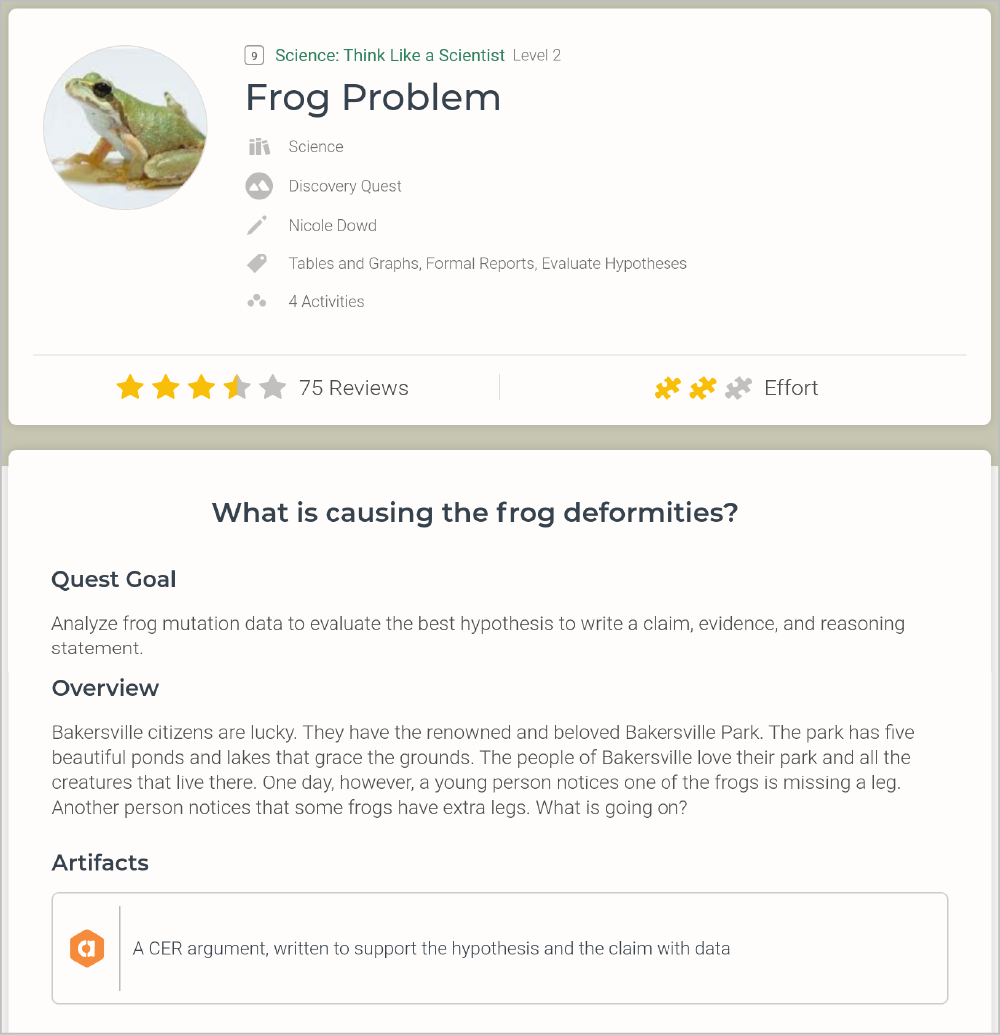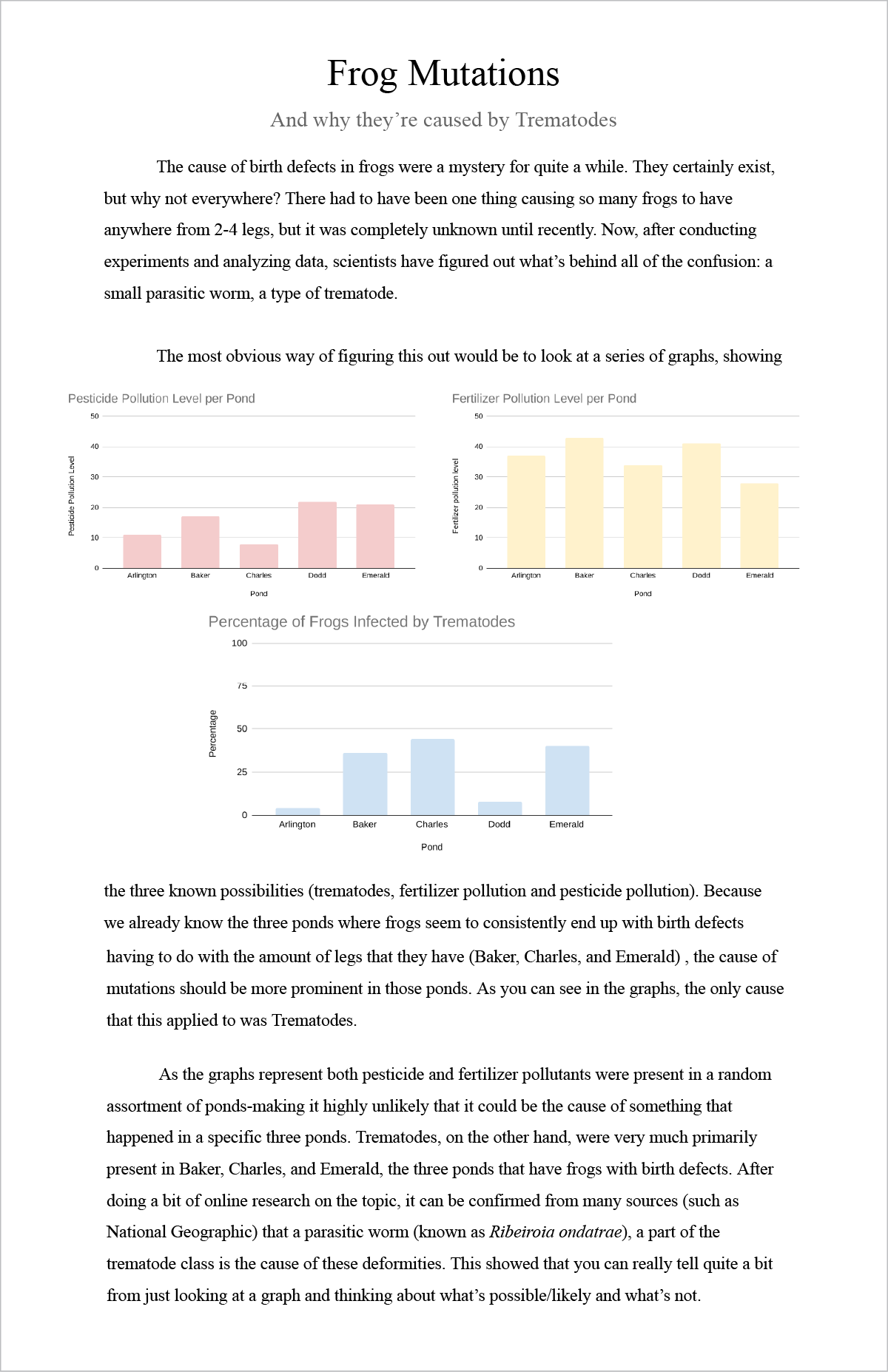Get to know the Learning Skills that help students ANALYZE
In our last post we focused on strategies and activities to support students build skills as they Explore. Those Learning Skills include Establish Meaning, Ask Questions, and Investigate.
In this post we focus on a second category of skills, Analyze, which includes the following Learning Skills:
- Interpret: Use sources, data, or computations to extract meaning.
- Identify Patterns: Find similarities and draw connections among events, ideas, and representations.
- Be Creative: Create solutions, new ideas, and new methods.
Take a look at examples, drawn from humanities and STEM courses, of what these skills look like in practice.
Interpret
Being able to interpret information, evidence, or data and explain it is an essential skill; it fuels and drives not only independent thinking, but also class discussion and collaboration. Students in my classes often struggled with this skill as they worked on research papers that went beyond simply summarizing information they found. The work of interpreting information is a hard skill that takes practice to develop.
Students interpret in various ways, including:
- Evaluating evidence in a text or source in response to a research question
- Displaying and communicating data visually
- Determining and describing the reasonableness of results, representations, or conclusions
- Evaluating the strengths and weaknesses of findings
- Solving a math problem and explaining what the results mean
- Analyzing data in various forms to ask more questions or draw conclusions
Identify Patterns
We identify patterns our entire lives. As we take in new information, we connect new knowledge to other things we know, believe, or have experienced. Identifying patterns provides a sense of order in what might otherwise not make sense, and helps us make inferences and educated guesses.
When encountered with a challenge, though, forming connections and identifying patterns is harder. Below are some examples of how students can develop the skill of identifying patterns across the subject areas.
- Observing and identifying patterns in natural phenomena, such as the shape and movement of clouds, the growth of plants, or the behavior of animals
- Using pedigrees to identify patterns of inheritance
- Analyzing patterns in geometric shapes, such as tessellations or fractals
- Identifying repetition of symbols in a text to analyze a motif.
- Creating a generalization about a topic based on evidence from multiple sources.
Be Creative
Creativity doesn’t just mean making a pretty poster or a diorama. It means using the imagination – coming up with an original idea, offering a unique perspective, or using the senses to create. It means analyzing the potential of a new idea or the implications of design choices.
Everyone has a creative side, whether it’s shown through problem solving, innovative thinking, or artistic expression. Allowing students to express creativity can be instrumental in driving student learning, as it brings a simple, but necessary, joy that is often overlooked in an academic setting. Below are some examples of how students can express creativity.
- Using feedback, input, or suggestions to develop a new idea or approach
- Sharing ideas through a unique medium
- Developing ideas for a research project
- Providing a unique perspective to a challenging situation
- Showing inspiration in their work (not plagiarizing)
- Using functions to describe coherence in algebraic manipulations
In the coming weeks, we’ll highlight the last two skill groups (Reason and Communicate) and ways students can practice these skills in any class. In the meantime, check out this artifact from the quest Frog Problem that showcases all three skills in action!
Quest Goal and Artifact Instructions

In the Frog Problem quest, students analyze and interpret frog mutation data; they identify patterns seen within the data and evaluate the best hypothesis; and, they have to be creative as they write a claim, evidence, and reasoning statement and draw conclusions about what is happening with the frogs.
Example Student Artifact

Want to know more about making skills the focus in your classes? Contact our Professional Learning team at teachers@opportunityeducation.org.

